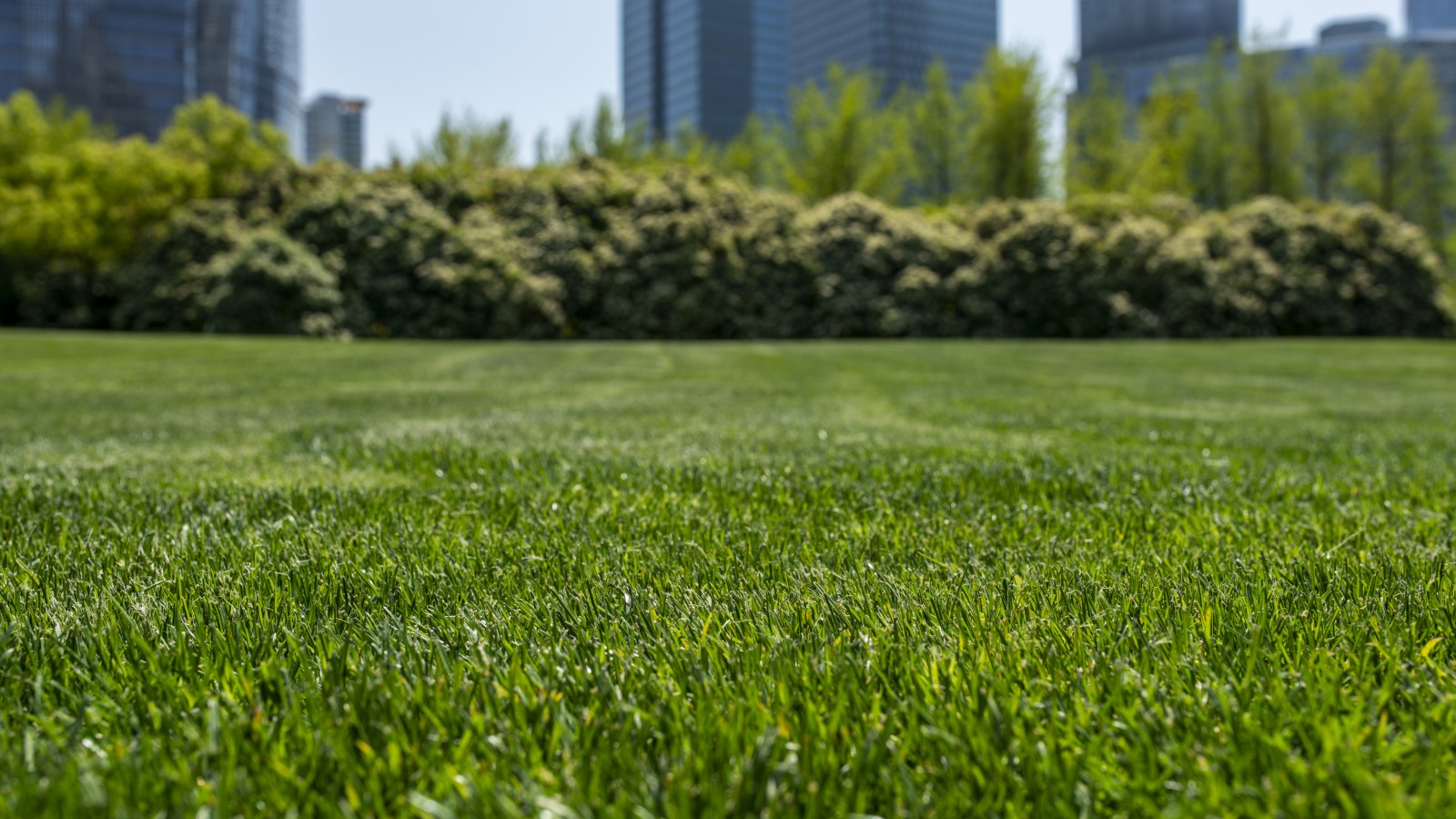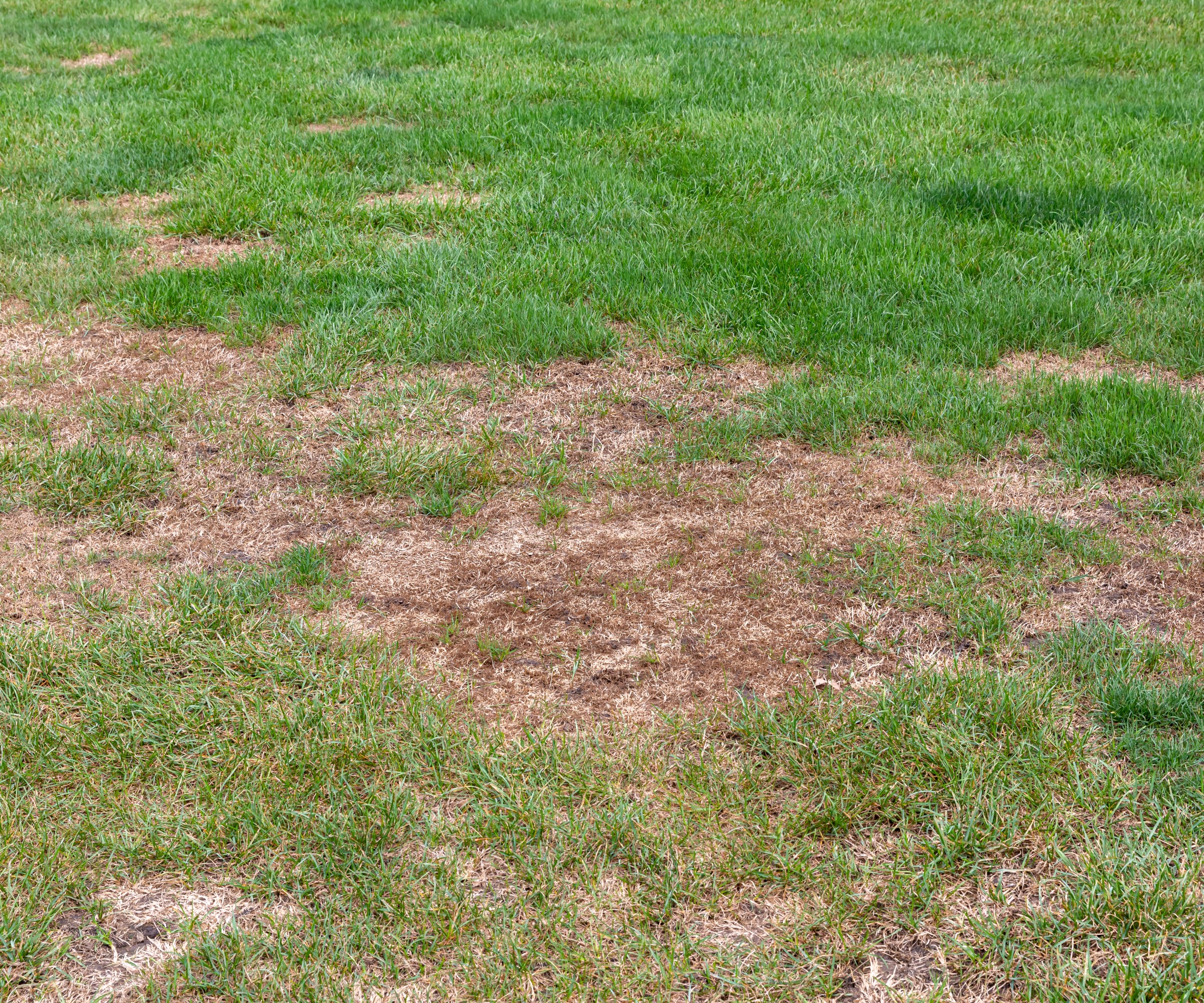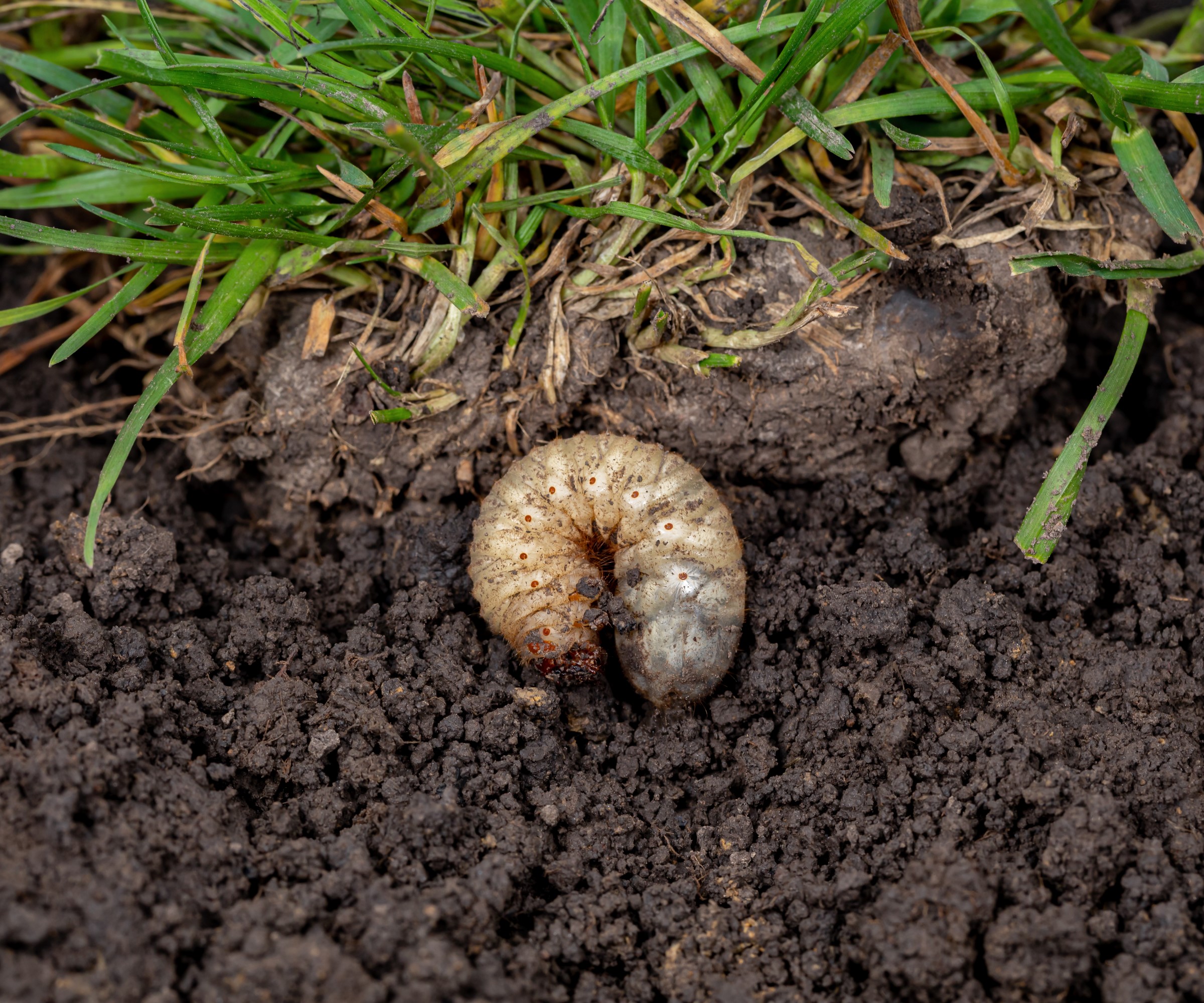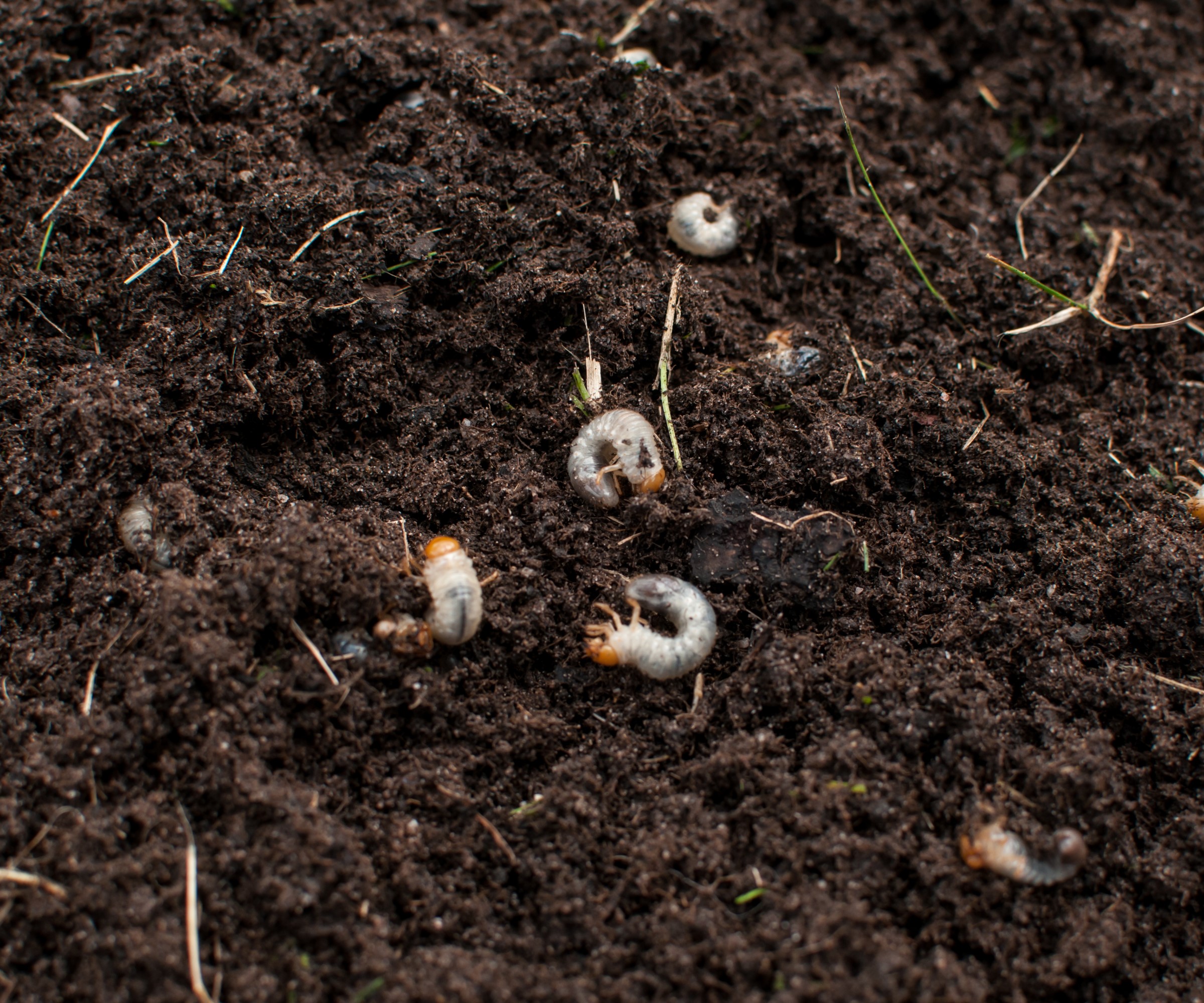When should you apply grub control? The experts reveal the best time to tackle these lawn pests
Whether you have a grub problem or are preventing future issues, discover the best time to put down grub killer and nematodes


Grubs are the larvae of insects and can cause major damage to a lawn. The larvae develop from eggs laid in the soil and start feasting on the grass roots and organic matter in the soil. This occurs during warm weather and the first you might know is when you see dead patches of grass. The grubs are capable of munching their way through large sections of lawn as they develop.
You can get rid of lawn grubs through good turf maintenance, such as aeration and scarification, as well as using chemical and biological controls. Treatments to tackle the problem are best applied in spring or summer, though can also be put down in fall.
By knowing when to apply grub control, as well as how often to do it, you can get these pests under control and even prevent future problems.

Patches of brown grass are a sign of grubs in the lawn

Drew is a journalist and former professional gardener and has spent years working in a range of gardens, including the world famous arts and crafts garden Hidcote Manor Garden in the UK. During his gardening career he also specialized as a kitchen gardener for the likes of Soho Farmhouse, and also produced year-round vegetables, microgreens, fruit and herbs for chefs at a prestigious restaurant. His passion for gardening and a love for inspiring others to grow led him to write how-to growing guides and professional tips for clients and websites in the horticultural sector, and he now brings that same expertise and passion to Homes & Gardens.
When to apply grub control
There are grub controls that can be applied to either actively prevent future grub problems, or to treat a problem that you have identified. The reasons you are applying will influence what treatment you use and when you put it on the lawn.
The two best windows for applying grub control are spring and late-summer, this is because that is when the grubs are most active in lawns. An infestation can quickly escalate as adult insects will emerge and deposit their eggs back into the soil, which hatch and then start feeding on the roots of the grass.
If you spot any patches of dead grass, brown in color, and identify that grubs are the cause, then you can start applying grub killer in spring. Treatments can be less effective in the spring as the grubs are not feeding as actively. An example of this form of treatment is BioAdvanced 24 Hour Grub Killer available at Amazon. It is effective to apply grub treatment after you aerate a lawn as it means it can easily penetrate down to the grubs.
To prevent future grub problems then you would use a grub preventer and this is put down in June or July. This timescale is right before their traditional annual period of hatching and protects against the next generation of grubs. An example of grub preventer is the Scotts GrubEx 1 Season Long Grub Killer available at Walmart.
Design expertise in your inbox – from inspiring decorating ideas and beautiful celebrity homes to practical gardening advice and shopping round-ups.
It is not recommended to apply grub preventer in the spring. When applied too early, it means the product will have degraded and lost much of its potency by the time the grubs’ hatching takes place in July and August.
When applying grub controls only apply at the manufacturer’s recommended rates and mow the lawn beforehand. It is important to water the lawn after, so consider applying before rain is forecast if you need to irrigate a large lawn. Monitor your lawn carefully and remember that some products may take up to a week to start being at its most effective.

Grubs munch on the roots of grass as they develop
When to put down grub killer nematodes
Nematodes are small, microscopic creatures that are living organisms parasitic to other insects. They are specific to targeted pests and commonly used as biological controls in organic growing. As well as being chemical-free, lawn grubs cannot build up a tolerance to nematodes, in the way they can with chemical controls.
Grub killers come in the form of a species of nematodes called Heterorhabditis bacteriophora that can target and control larvae. Nematodes are safe to use around children, pets, and wildlife.
'Nematodes are available by mail order and arrive in small parcels,' says Ruth Hayes, gardening editor for Amateur Gardening. 'Ideally, they should be applied immediately, but many can be stored in a refrigerator at 39˚F for up to two weeks if it is not possible to apply them on arrival,'

As gardening editor of Amateur Gardening magazine, Ruth spends her days writing about and photographing the gardening jobs that her readers should be tackling each week. Horticulturally trained, she has qualifications from the Royal Horticultural Society. She frequently offers expert advice on how to get rid of common garden pests, including lawn grubs.
The treatment can be applied in April or May and also August through to the end of October. They can be applied when the soil temperature is above 54˚F. It is recommended to apply in September if you applied nematodes in April or May.
Mow the grass short before applying grub killer nematodes and irrigate the lawn prior to putting down the treatment. 'Bear in mind that if the soil is dry their range of travel is limited, so it’s important to water the area before adding the control solution, and water again if there is no steady rain,' adds Ruth. Watering the lawn well after applying will wash the nematodes down to the area in the soil where the larvae are.

Larvae hatch in the summer months
FAQs
When can I apply neem oil to stop grubs in the lawn?
There is another eco-friendly approach that can be taken and that is using neem oil. The oil, which is commonly stored in a garden shed, can be mixed with water – at a rate of two tablespoons of neem oil to a gallon of water – and sprayed on a grub infested lawn to tackle grub problems. Use it as a treatment when there are signs of grubs and apply in the spring or early summer. Simply spray on the brown areas where grubs have been prevalent and continue to apply it once a week until it looks like there are no more signs of grub activity.
Can you put grub killer down in the fall?
There are two chemicals, carbaryl and trichlorfon, that can combat grubs in spring and also be utilized successfully in early fall. It is estimated that they can be up to 80% effective in September and 55% effective in October. It is not recommended to apply grub killer any later than October. Treatments applied in fall can take longer to take effect and will need following up with a preventative treatment the following year.
How often should grub control be applied?
You do not have to apply grub control annually as part of your grass maintenance regime, along with likes of aerating and efforts to dethatch a lawn, unless you see damage. If you did experience grubs in your lawn the previous year, it is beneficial to apply a grub preventer the following year. It is not necessary to continually apply preventer year-on-year, until you see signs of grub damage again in your lawn.

Drew has worked as a writer since 2008 and was also a professional gardener for many years. As a trained horticulturist, he worked in prestigious historic gardens, including Hanbury Hall and the world-famous Hidcote Manor Garden. He also spent time as a specialist kitchen gardener at Soho Farmhouse and Netherby Hall, where he grew vegetables, fruit, herbs, and cut flowers for restaurants. Drew has written for numerous print and online publications and is an allotment holder and garden blogger. He is shortlisted for the Digital Gardening Writer of the Year at the 2025 Garden Media Guild Awards.